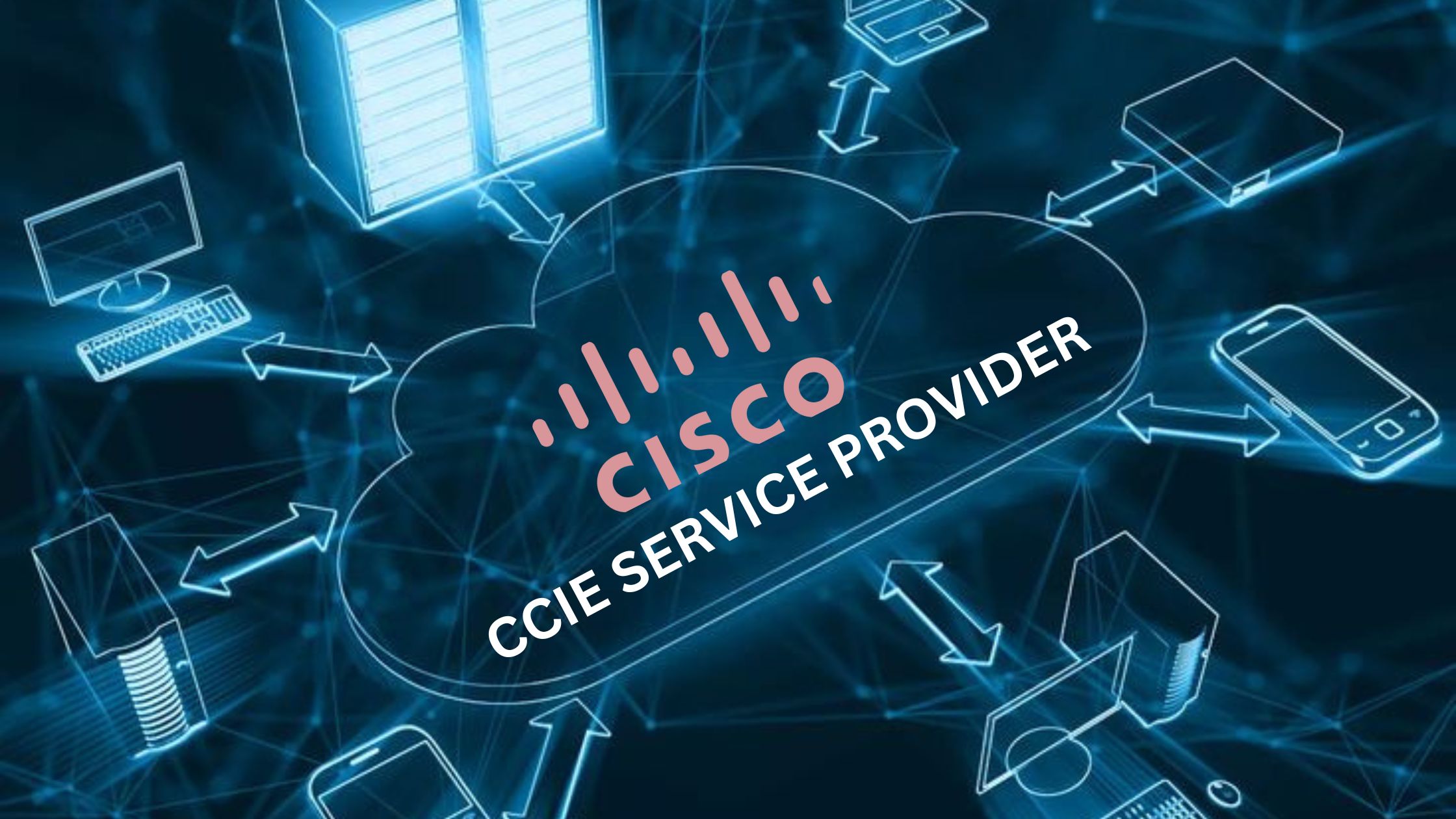Master CCIE Service Provider certification to excel in networking, MPLS, BGP, and advanced service provider solutions.
The CCIE Service Provider certification is one of the most prestigious credentials in the networking industry. It validates an individual's expertise in designing, implementing, and troubleshooting complex service provider networks. If you aspire to become a highly skilled networking professional, this certification can open numerous career opportunities.
What is CCIE Service Provider Certification?
The CCIE Service Provider certification is a high-level Cisco certification designed for networking professionals who work with service provider networks. It focuses on advanced routing, automation, and networking infrastructure. The certification is ideal for engineers who design and maintain carrier-grade networks.
Key Features of CCIE Service Provider Certification:
- Validates expertise in complex networking solutions.
- Focuses on service provider technologies such as MPLS, QoS, and automation.
- Recognized globally by networking professionals and companies.
- Helps in career advancement and higher salary prospects.
Benefits of Becoming a CCIE Service Provider
Earning the CCIE Service Provider certification offers numerous advantages. Here’s why it is worth pursuing:
1. High Earning Potential
Certified professionals are in high demand, and employers are willing to pay premium salaries for their skills. The certification boosts your earning potential and career growth.
2. Global Recognition
CCIE is recognized worldwide as a prestigious certification. It increases credibility and helps professionals secure jobs in multinational companies.
3. Career Advancement
With CCIE Service Provider certification, networking professionals can advance to senior-level positions such as Network Architect, Senior Network Engineer, or Solutions Consultant.
4. Mastery of Networking Technologies
The certification process ensures that candidates have in-depth knowledge of networking protocols, automation, and troubleshooting skills, making them experts in their field.
Exam Details and Requirements
To achieve the CCIE Service Provider certification, candidates must pass a written exam and a hands-on lab exam.
1. Written Exam (350-501 SPCOR)
- Focuses on core service provider technologies.
- Covers topics such as BGP, MPLS, QoS, and automation.
- Duration: 120 minutes.
- Available in multiple languages.
2. Lab Exam
- An 8-hour practical exam that tests candidates' ability to configure and troubleshoot complex service provider networks.
- Covers real-world networking scenarios.
- Requires deep technical knowledge and problem-solving skills.
How to Prepare for the CCIE Service Provider Certification
Preparing for the CCIE Service Provider exam requires a strategic approach. Here are some essential tips to help you succeed:
1. Understand the Exam Blueprint
Review the official Cisco exam blueprint to understand the topics covered in both the written and lab exams.
2. Gain Hands-On Experience
Practical experience is crucial. Set up a lab environment using Cisco routers and switches or use Cisco’s virtual labs for practice.
3. Take Online Training Courses
Enroll in online courses and training programs that provide structured learning materials and hands-on labs.
4. Join Networking Communities
Engage with other CCIE aspirants and professionals in forums and study groups. Sharing knowledge can help you grasp complex concepts.
5. Practice with Mock Exams
Attempt practice tests and mock exams to assess your knowledge and improve time management skills.
Career Opportunities After CCIE Service Provider Certification
A CCIE Service Provider certification opens the door to several career opportunities. Certified professionals are highly sought after by top companies worldwide.
1. Network Engineer
Responsible for designing, implementing, and troubleshooting network infrastructures for service providers.
2. Solutions Architect
Works on designing high-performance network solutions tailored for large-scale service providers.
3. Senior Network Consultant
Provides expert advice and solutions for improving and optimizing service provider networks.
4. Network Automation Engineer
Focuses on automating network processes using advanced tools and programming languages.
5. Technical Support Engineer
Helps service providers resolve technical issues and improve network performance.
Challenges in CCIE Service Provider Certification
While the CCIE Service Provider certification offers great rewards, it comes with challenges that candidates should be prepared for.
1. High Level of Difficulty
The CCIE certification is one of the toughest in the networking field. The lab exam, in particular, requires extensive hands-on experience and deep theoretical knowledge.
2. Time Commitment
Preparing for the certification demands months of rigorous study and practice. Balancing work, personal life, and preparation can be challenging.
3. Cost of Certification
The certification process, including training materials, lab equipment, and exam fees, can be expensive. Proper financial planning is essential.
Future of CCIE Service Provider Certification
The demand for CCIE Service Provider professionals is expected to grow as networking technologies evolve.
1. Adoption of Automation
Network automation is becoming a key trend, and CCIE-certified professionals will need to stay updated with automation tools and scripting languages like Python.
2. Growth of Cloud Networking
With the increasing adoption of cloud computing, service provider networks are evolving. Professionals with expertise in cloud-based networking solutions will have a competitive edge.
3. Expanding Job Opportunities
As businesses and telecom companies continue to expand their networks, the demand for skilled professionals will continue to rise, ensuring long-term career stability for CCIE holders.
Conclusion
The CCIE Service Provider certification is a prestigious credential that validates expertise in complex networking environments. It provides career growth, high salary potential, and global recognition. By preparing thoroughly and gaining hands-on experience, you can achieve this certification and unlock numerous career opportunities in the networking industry.


